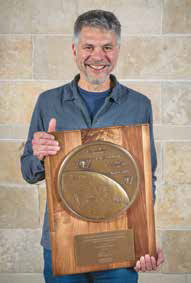| GNSS News | |
GNSS
Pentagon warns of GPS interference from Ligado broadband network
As required by Congress in section 1663 of the 2021 National Defense Authorization Act, the National Academies of Science, Engineering and Medicine (NASEM) committee recently released its study on Ligado’s planned deployment of terrestrial services and its potential to interfere with GPS capabilities essential for DoD’s mission execution. National security missions that our service men and women execute every day are of the utmost importance and require a solution that ensures continued operations of critical systems.
The NASEM study confirms that Ligado’s system will interfere with DoD GPS receivers, which include high-precision GPS receivers. The study also confirms that Iridium satellite communications will experience harmful interference caused by Ligado user terminals. Further, the study notes that when DoD’s testing approach, which is based on signal-to-noise ratio, is correctly applied, it is the more comprehensive and informative approach to assessing interference. The study also concludes that the Federal Communication Commission’s (FCC) proposed mitigation and replacement measures are impractical, cost prohibitive, and possibly ineffective.
These conclusions are consistent with DoD’s longstanding view that Ligado’s system will interfere with critical GPS receivers and that it is impractical to mitigate the impact of that interference. www.defense.gov
Latest Galileo satellites join constellation with enhanced, faster fix
Galileo satellites 27-28 were launched at the end of last year and underwent their in-orbit test review at the end of April, held between ESA, satellite manufacturer OHB and navigation payload maker Surrey Satellite Technology Ltd (SSTL). Their key findings included the fact that both satellites’ payloads are performing extremely well and that both satellites entering into service increase the position accuracy and robustness of the overall Galileo system.
A successful system/operations in-orbit test review followed, co-chaired by ESA and EUSPA, the EU Agency for the Space Programme, in overall charge of commissioning, which confirmed the satellites’ health.
Now, following a successful test campaign this summer, these two new Galileo satellites have become the first to broadcast an improved navigation message, resulting in three key improvements for Galileo’s public Open Service users. www.esa.int
Galileo Second Generation technology tested in ESA labs
Europe’s first generation Galileo constellation is already the world’s most precise satellite navigation system. The Second Generation will enable even better performance and an expanded range of services.
Essential elements of the G2 system are being evaluated in ESA laboratories, including key algorithms to synchronize satellite timing and determine orbits, as well as test versions of a GNSS receiver and emergency beacon.
Two independent families of satellites, totaling 12 G2 satellites, are being procured by Thales Alenia Space in Italy and Airbus Defence & Space in Germany. With their first launches due in the middle of this decade, G2 satellites will be much larger than existing Galileo satellites, and they represent a major technical step forward.
ESA testing sensor network for smart city navigation
New infrastructure added to ESA’s ESTEC technical centre in the Netherlands is helping to test how tomorrow’s smart cities will operate in practice. The HANSEL system is hosted in ESTEC’s Navigation Laboratory and allows linking to sensors across the site, providing insight into the collective networking and computing needed to get a variety of ‘intelligent elements’ to mesh seamlessly together – what the brain of a future smart city might look like.
Scenes from future smart city living: building light and power switching on and off as occupants move from room to room; a smart factory zone operating without human intervention; autonomous cars that pull up to the kerb just as you need a ride; urban drones that deliver orders right into your hands. Central to these concepts is the need for shared, precise positioning.
The challenge is that satellite navigation – today’s leading positioning method – is simply not precise or reliable enough in these scenarios to realise such visions, at least by itself.
The traditional method of harnessing wi-fi for positioning purposes has been simply to create maps of wi-fi signal strength across given geographic areas, which results in limited accuracy. A new wi-fi standard additionally allows your device to constantly ‘ping’ the wi-fi access points to determine the signal’s round trip travel time and therefore the distance between itself and the access point, offering an additional solution to fix position.
The HANSEL system looks forward to a time when smart cities are embedded with sensors that measure their positions and share them with each other, allowing the various smart city components to interact and contribute to overall accuracy and availability improvements. www.esa.int












 (No Ratings Yet)
(No Ratings Yet)






Leave your response!